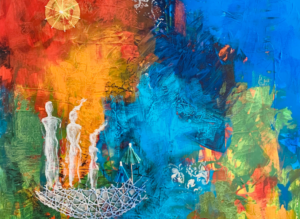Jewish Women in Greece: A Women’s Siddur (Seder Nashim)
Explore an artifact that proved to be a pivotal moment in Jewish women's religious life
By The National Library of Israel
Published Apr 26, 2023

Seder Nashim, opening page, Salonica, Greece, circa 1550
COURTESY ARDON BAR-HAMA
The ‘Seder Nashim’, a meaningful artifact from the 16th century, offers a unique window into the spiritual lives of Jewish women in Greece. As one of the earliest siddurim (Jewish prayer books) translated into Ladino, it marks a significant cultural milestone in Jewish history. This siddur, found in Salonica (present-day Thessaloniki), reflects the linguistic journey of the Jewish people and the evolving role of women in Jewish religious practices.
‘Seder Nashim’ embodies a revolution in accessibility and inclusivity. By translating prayers and religious laws into Ladino, it catered to a demographic historically overlooked in religious scholarship — women. This act of translation as cultural as it was linguistic, bridging the gap between the daily lives of Jewish women with Hebrew scholarship, since many of these women were not fluent in Hebrew.
This siddur also serves as a narrative of resilience and adaptability. It tells the story of how Jewish women, in the midst of upheaval and displacement, maintained and adapted their spiritual practices. Preserved by the National Library of Israel, the ‘Seder Nashim’ is a poignant reminder of the enduring strength and diversity of Jewish women and of Jewish culture.
Founded in Jerusalem in 1892, the National Library of Israel (NLI) serves as Israel's preeminent research library
Reflections
Click here to visit the exhibition resource page to learn more and to browse accompanying lesson plans, webinars, and videos, about the treasures in this exhibition.
Want more?
Get curated JewishArts.org content in your inbox


